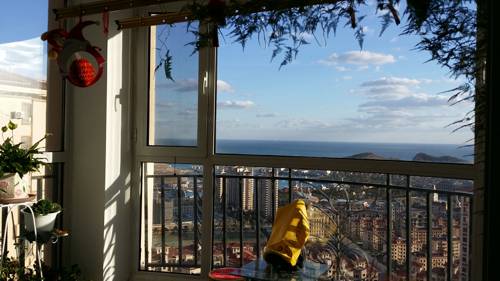
FAQ About Indoor Plant-Based Landscaping for Home Interiors

What are the benefits of indoor plant-based landscaping for home interiors?
Indoor plant-based landscaping offers numerous benefits, including improving air quality by absorbing toxins and releasing oxygen, reducing stress, and enhancing the aesthetic appeal of a home. Plants also help in regulating humidity levels and can even reduce noise levels by absorbing sound.

Which plants are best suited for indoor landscaping?
Some of the best plants for indoor landscaping include snake plants, spider plants, pothos, peace lilies, and succulents. These plants are hardy, require low maintenance, and can thrive with less light, making them ideal for indoor environments.

How can I design a creative indoor landscape using plants?
To design a creative indoor landscape, consider varying the height and textures of plants. Use a combination of tall plants, like fiddle leaf figs, and shorter ones, like succulents. Incorporate wall planters or vertical gardens for a unique look, and use decorative pots or plant stands to enhance visual interest.

What are the key considerations when selecting plants for indoor landscaping?
When selecting plants for indoor landscaping, consider lighting conditions, humidity levels, and temperature of the space. It's important to choose plants compatible with these environmental factors. Additionally, consider the maintenance level you're comfortable with and any potential allergic reactions for household members.

Can indoor plants help improve indoor air quality?
Yes, indoor plants can significantly improve air quality. Plants like spider plants, peace lilies, and snake plants are known to filter out common indoor pollutants such as formaldehyde, benzene, and ammonia, contributing to a healthier living environment.

How often should I water my indoor plants?
The watering frequency for indoor plants depends on the species, pot size, and environmental conditions like humidity and temperature. As a general rule, allow the top inch of soil to dry out before watering again. Overwatering can lead to root rot, so it's important to monitor soil moisture levels regularly.

What are some common mistakes in indoor plant-based landscaping?
Common mistakes include overwatering, underestimating lighting requirements, and overcrowding plants, which can limit air circulation. It's also important to avoid placing incompatible plant species together and to ensure proper drainage in pots to prevent root rot.

How can I incorporate indoor plants into my home decor?
Incorporate indoor plants into home decor by using them as focal points on shelves or tables, hanging them in decorative pots, or arranging them in clusters for a lush, green look. Match pots with your existing decor style, and consider using plants as natural dividers in open spaces.

What aesthetic styles can be enhanced with indoor plant-based landscaping?
Indoor plant-based landscaping complements various aesthetic styles such as modern, bohemian, rustic, and minimalist. For a modern look, use sleek, geometric pots; for bohemian, choose eclectic arrangements. Rustic styles can benefit from wooden planters, while minimalist spaces thrive with clean, simple plant arrangements.

What are vertical gardens and how do they fit into indoor landscaping?
Vertical gardens involve growing plants on vertically suspended panels or shelves. They are an excellent option for maximizing greenery in compact spaces and add a lush, vibrant touch to any room. Vertical gardens can also diversify the textures and shapes within an indoor landscape.

How do I ensure my indoor plants receive enough light?
Ensure your indoor plants receive enough light by positioning them near windows or using grow lights, especially for plants in low-light areas. Regularly rotate your plants to ensure even growth, and consider the specific light needs of each plant type to optimize their placement.

Can I use artificial plants in my indoor landscape?
Yes, artificial plants can be used in indoor landscapes, especially in areas where real plants may struggle to survive due to lighting or temperature constraints. While they do not offer the air purifying benefits of real plants, high-quality artificial plants can add greenery and aesthetic appeal.

How can indoor plant-based landscaping affect mental health?
Indoor plants are known to boost mental well-being by reducing stress and anxiety levels, promoting relaxation, and enhancing mood. The act of caring for plants can also be therapeutic, providing a sense of accomplishment and connectivity with nature.

What maintenance do indoor plants require?
Indoor plants require regular watering, appropriate lighting, and occasional feeding with fertilizers. Pruning to remove dead leaves and repotting when plants outgrow their pots is also necessary for maintaining plant health and appearance.

Are there plants that are specifically good for people with allergies?
For people with allergies, choose plants that do not release pollen or have strong scents. Some allergy-friendly options include female palms, bamboo palms, and snake plants. These plants help improve air quality without triggering allergic reactions.

Can indoor plants be used in kitchens and bathrooms?
Yes, indoor plants can thrive in kitchens and bathrooms, where humidity levels are usually higher. Plants like pothos, peace lilies, and ferns are suitable for such environments, as they enjoy the moisture and can tolerate the varying temperatures.

What role does humidity play in indoor plant growth?
Humidity is crucial for indoor plant growth as many houseplants originally come from tropical regions with high humidity. Low humidity can cause brown leaf tips and slow growth. Increasing humidity with humidifiers, misting, or placing water trays near plants can help maintain optimal conditions.

Are there any indoor plants that require low maintenance?
Yes, several indoor plants require minimal care and are perfect for those with busy schedules. Some low-maintenance plants include the snake plant, ZZ plant, and pothos. These plants are forgiving, tolerating a range of lighting conditions and infrequent watering.

Can indoor plants help with noise reduction?
Plants can indeed help with noise reduction. The foliage of indoor plants absorbs sound, reducing echo and background noise levels, which can contribute to a quieter home environment. Larger leafed plants and plant clusters are particularly effective at this.

How can I prevent pests in my indoor plant-based landscape?
Prevent pests by maintaining plant health through proper watering, avoiding water-logged soil, and ensuring good air circulation. Regularly inspect plants for signs of pests like aphids or spider mites, and treat infestations promptly with insecticidal soap or neem oil if necessary.
